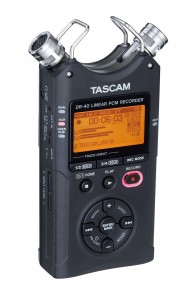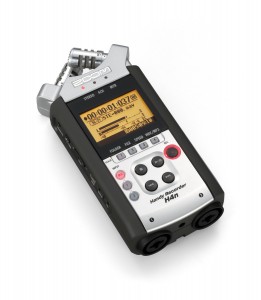A Better Way to Record the Audio for Your Church Services
I’ve been using a Tascam DR-40 portable recorder for over a year now to record our band reharsals and services each week at church. After each rehearsal, I import the recorded audio into my DAW, export each song as an MP3, and e-mail those MP3’s to the other members of the band so we can evaluate our parts, practice them, and listen to the songs to help commit any new ones to memory. I’ll often do the same thing after our services, just so we can listen back and hear how everything sounded out front during the service. I also want to begin posting the pastor’s sermon each week on the church website, but recording the sermon with the DR-40 has brought some challenges (more on that in just a moment).
While I could technically use our board (a Behringer X32, read my review of it by clicking here) as a recording interface to record our services, I’ve chosen to use the DR-40 instead, for two primary reasons:
1. We want to know what things really sound like in the room, so it approximates what the congregation is hearing. Recording the stereo mix from the X32 would only record what’s being mixed through the board, and it would not pick up what things sound like in the room. Since our sanctuary is a medium-sized room with a capacity of around 200, some of the instruments (e.g., drums & bass) don’t require much amplification through the PA system, so very little of those instruments is in the house mix.
2. Recording each instrument to its own track in a DAW would have the same problem as #1, AND it would require a LOT of extra work on my part after each rehearsal to edit and mix those tracks, bounce them down to stereo, master them, etc. It would basically be like recording, mixing, and mastering a live EP every week, and I simply don’t have that much free time on my hands.
Using the DR-40 has worked out pretty well for the band. I’ve always used the built-in mics and recorded a 24-bit stereo Wav file that I can easily pull into my DAW for editing. Since I’m only dealing with a single stereo track, it’s fairly quick and easy to chop it up into individual songs and render those as MP3’s. However, there are a couple of down-sides to this:
1. It does a lousy job of recording the sermon. The input levels are set for the band, which is obviously much louder than just the pastor’s mic when he is speaking.
2. It only tells us what things sound like in the room at the location of the DR-40 (near the rear of the room, roughly in the center).
Granted, I can slice up the audio from the service and normalize the sermon portion, but since the volume of the pastor’s voice is much lower than the volume of the band, any kind of background noises (people coughing, turning pages, peppermint wrappers, etc.) are extremely loud on the recording, because those people are only a few feet away from the recorder’s built-in mics.
While watching some church sound YouTube videos, I happened upon a simple, but creative idea: record to the DR-40 using both the internal mics and by connecting a stereo feed from the mixing board to the external line inputs. Here’s how you do it conceptually:
1. Set the DR-40 into 4-track mode.
2. Set the External switch on the DR-40 to “Line”.
3.Connect a stereo out from your board to the External inputs (the XLR/TRS combo connectors on the bottom).
4. Set the input levels of the internal mics and external inputs separately to get a good strong signal to both.
On the DR-40, this will create 2 stereo tracks: 1 from the two internal mics and another from the line inputs (the board mix). I expect this to work out nicely. It should allow us to hear exactly what is going through the PA system, and yet we will also still be able to hear the room sound as it gets picked up by the internal mics. The direct and room sounds can then be blended together in my DAW to hopefully get an even clearer picture of how things sound to the congregation. This also has another added beneft: when I’m editing in my DAW, during the sermon I can mute the tracks recorded by the DR-40’s internal mics and only use the direct board sound. This will give us a good strong signal from the pastor’s headset mic and shouldn’t pick up any background noise from the congregation.
Although I’ve been speaking in terms of using the Tascam DR-40, you could do the same with a variety of portable recorders, including the ever-popular Zoom H4N or a variety of other models. As long as your recorder has internal mics and external inputs, and you can use them both simultaneously, this trick should work for you too. Give it a try and let me know how it works out. I plan to report back after spending a few weeks trying it out for myself.
Support this site by shopping for products mentioned in this article at Zzounds:
Tascam DR-40
Zoom H4N
Tascam DR-44WL
Zoom H5
Zoom H6
Portable Media Recorders
Removable Media Recorders
 February 11, 2016
|
Posted by Jon (admin)
February 11, 2016
|
Posted by Jon (admin)


 Categories:
Categories:  Tags:
Tags: 